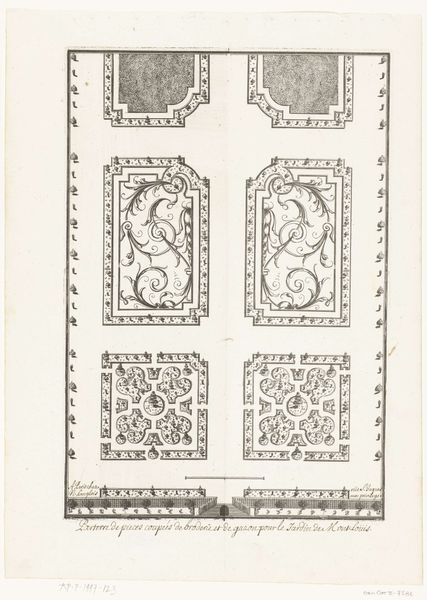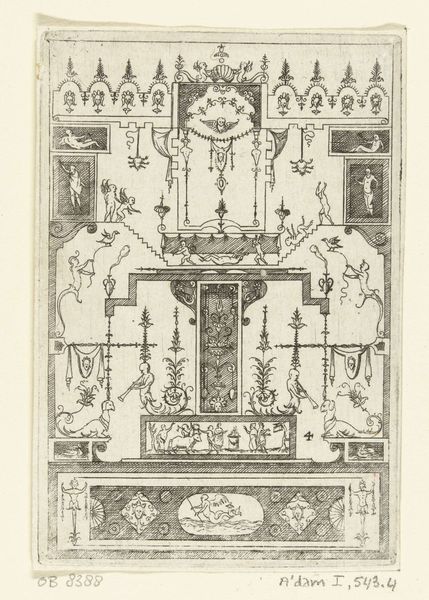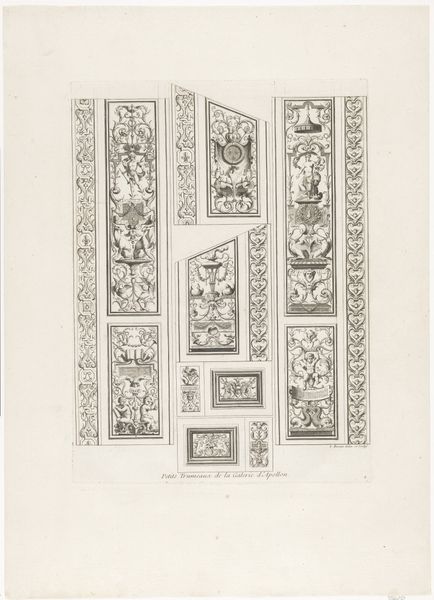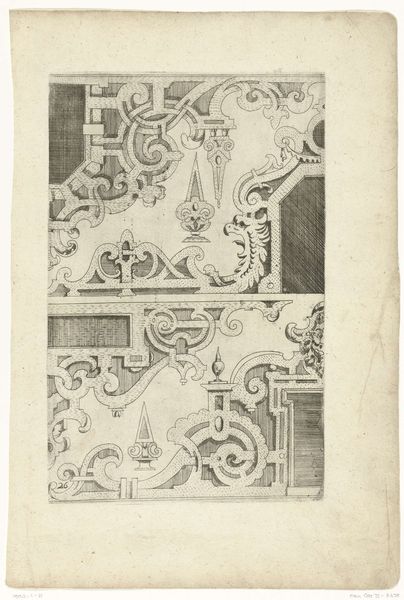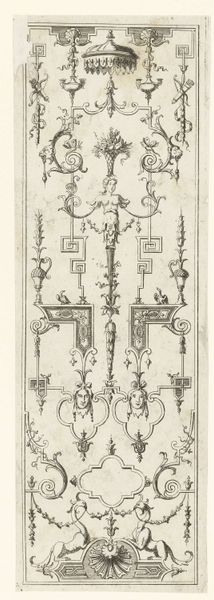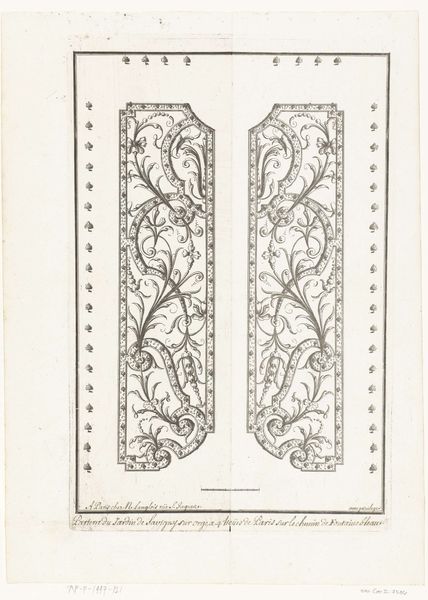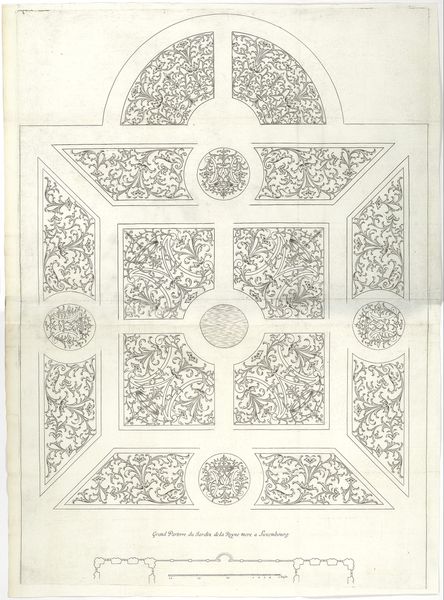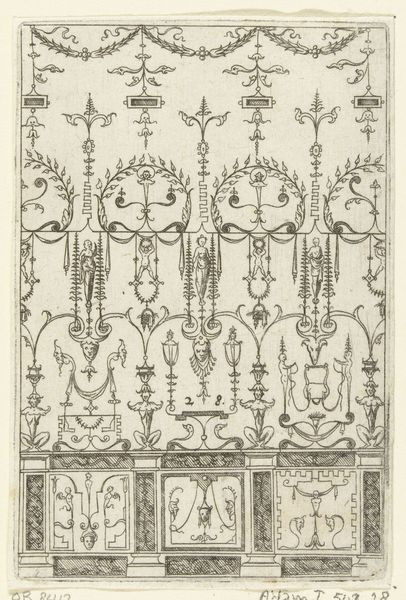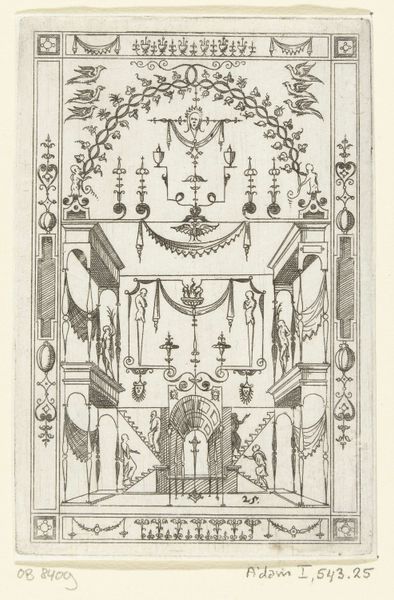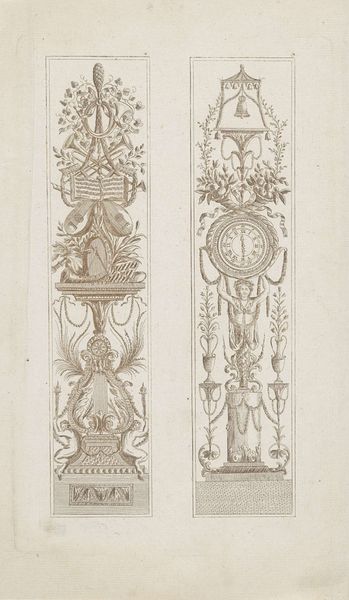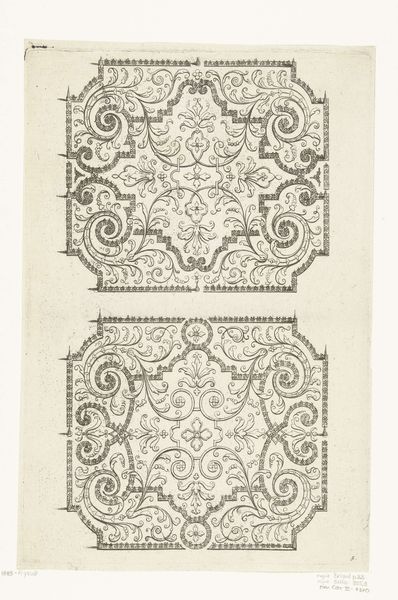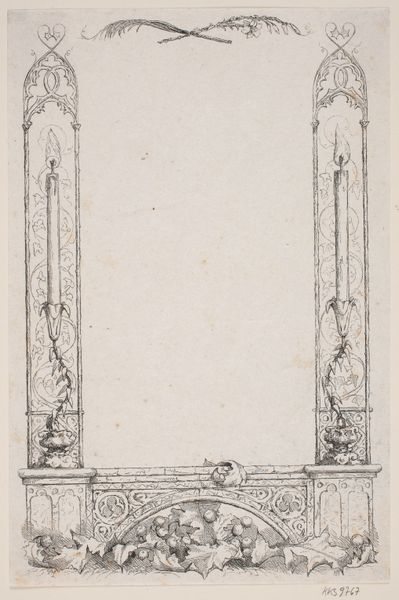
drawing, print, etching, architecture
#
drawing
# print
#
etching
#
landscape
#
etching
#
11_renaissance
#
geometric
#
architecture
Dimensions: height 310 mm, width 215 mm
Copyright: Rijks Museum: Open Domain
This is André Le Nôtre’s "Parterre van de tuin van Mont-Louis," an engraving depicting a garden layout. Le Nôtre was the principal gardener of Louis XIV, designing the Gardens of Versailles, an emblem of French absolutism. Here, you can see the rigid structure of the garden design. The print reflects the formal, controlled aesthetic that was fashionable among the European elite, meant to mirror the order and power of the court. But I wonder, was this order truly a reflection of the realities of French society? The gardens were a place of performance. They were designed as stages for social display, reinforcing a hierarchy where status was meticulously cultivated and performed. Le Nôtre’s garden designs imposed a vision of order on nature itself, reflecting the desire of the aristocracy to control and manage every aspect of their environment. How did these designs shape or reflect societal issues of class and power at the time?
Comments
No comments
Be the first to comment and join the conversation on the ultimate creative platform.
